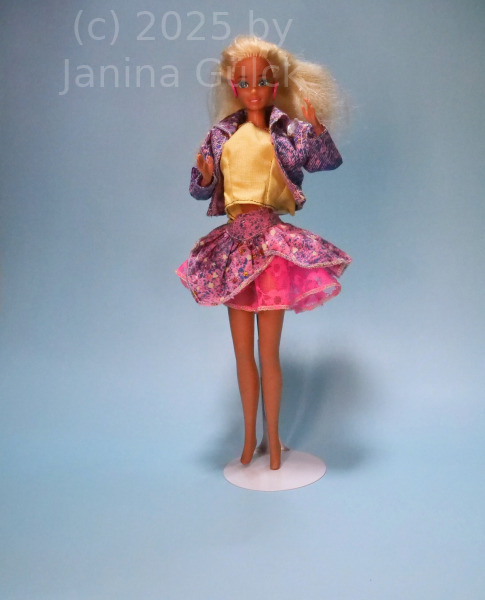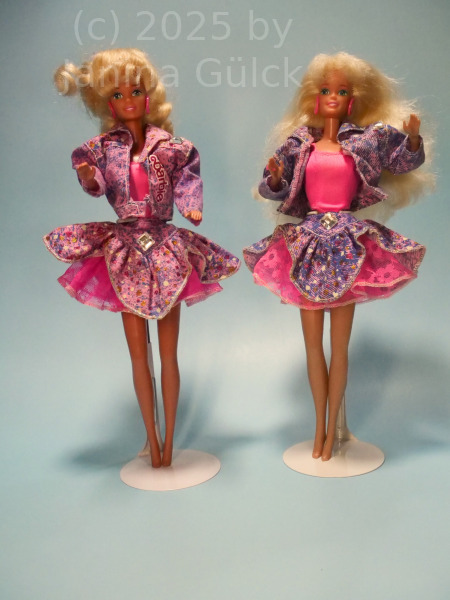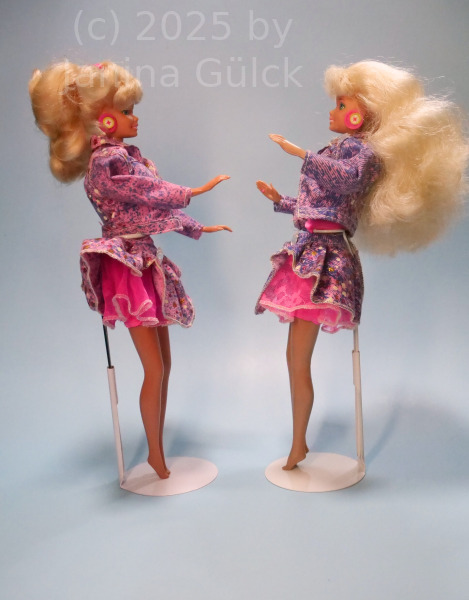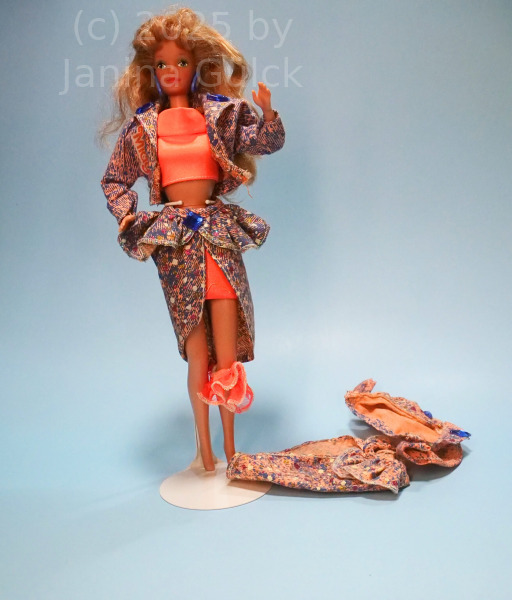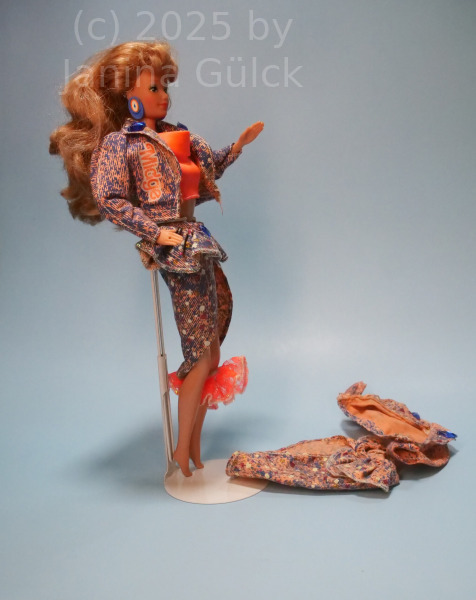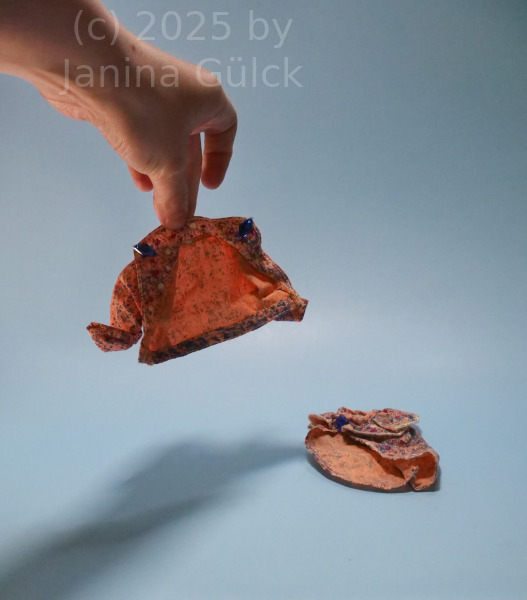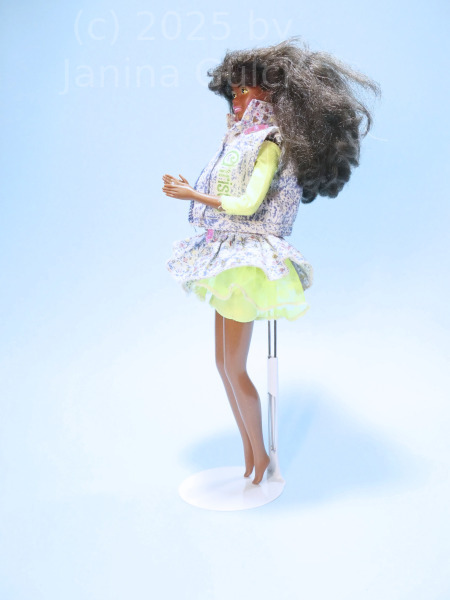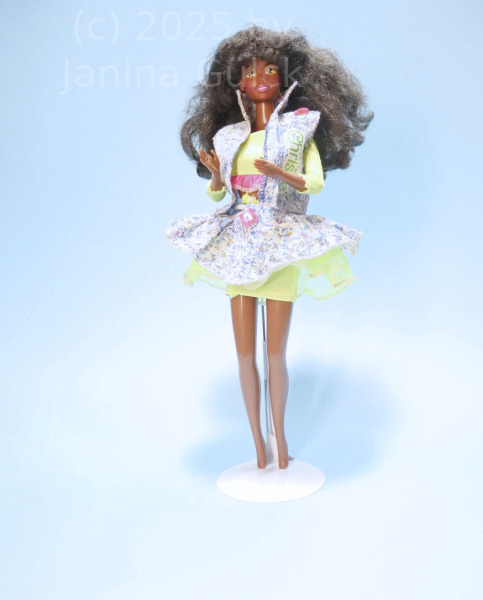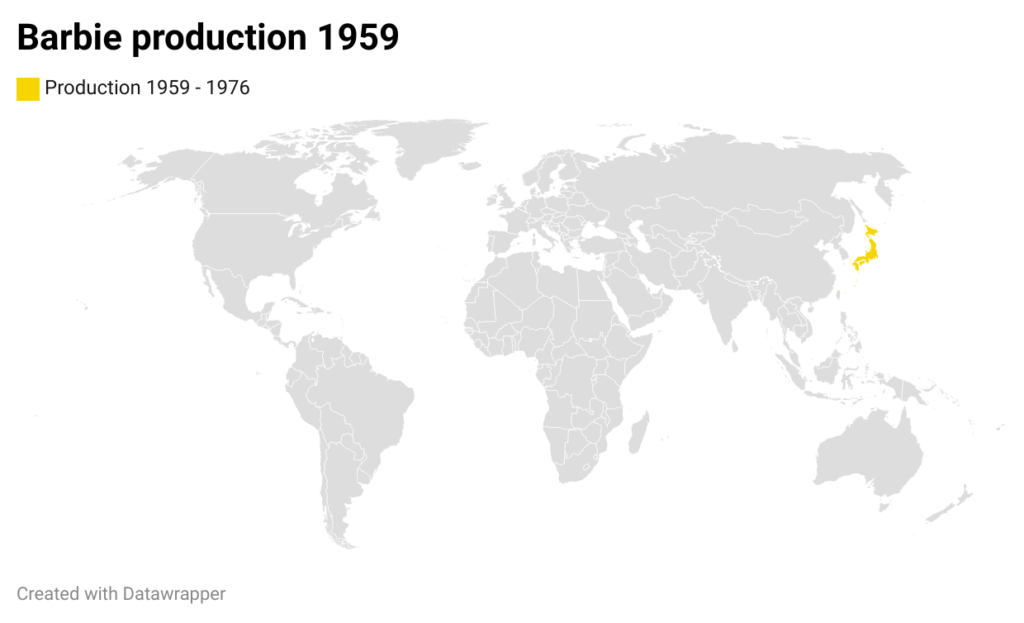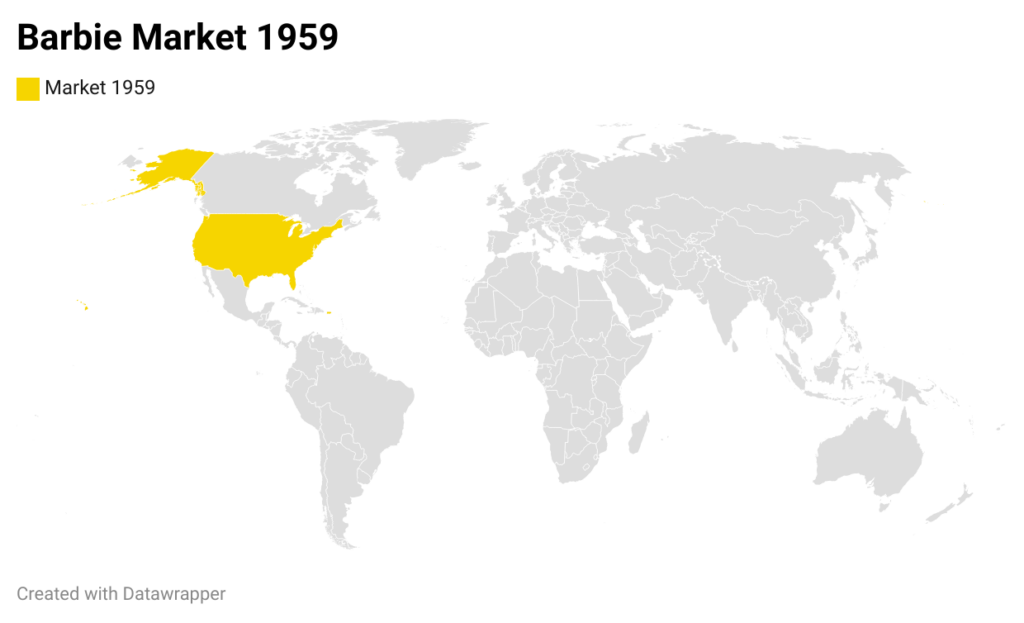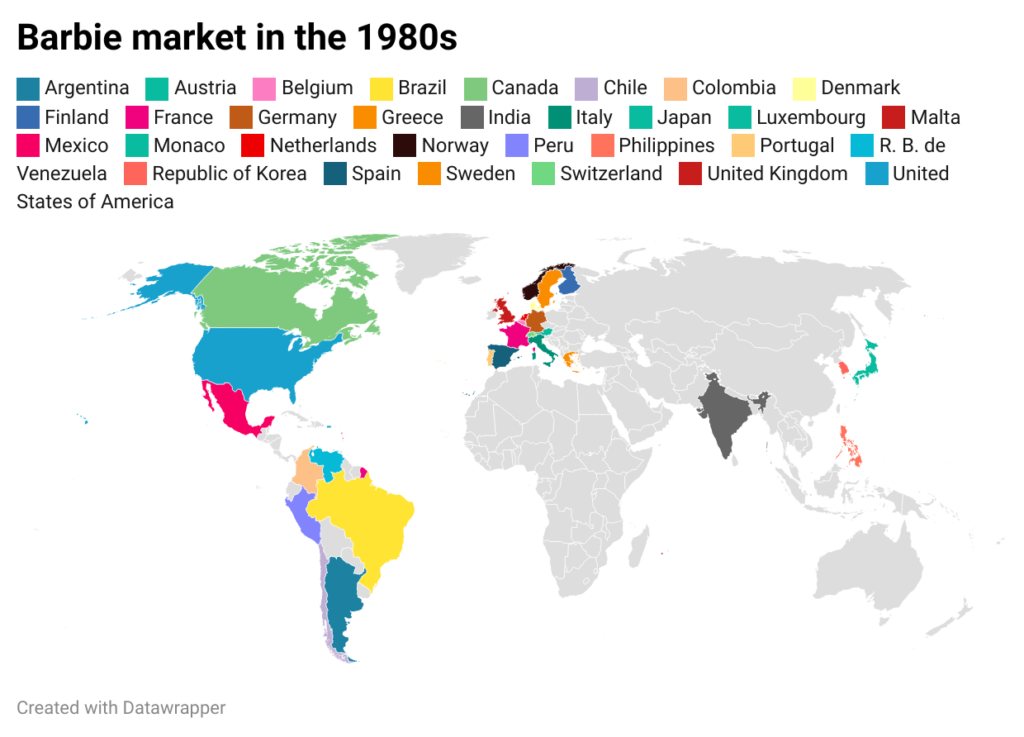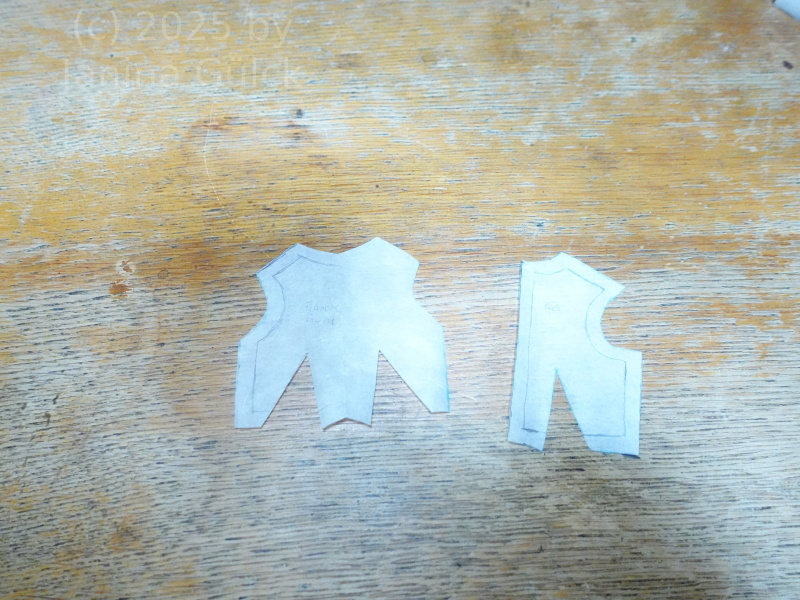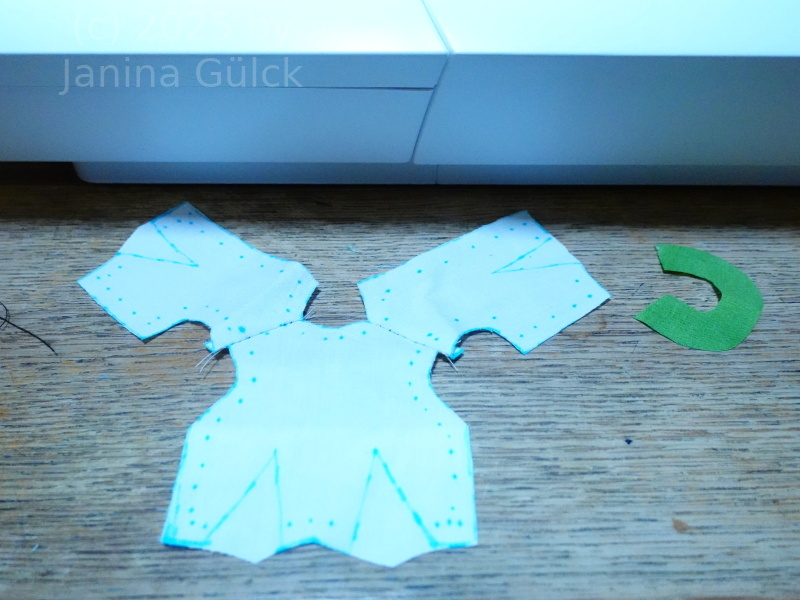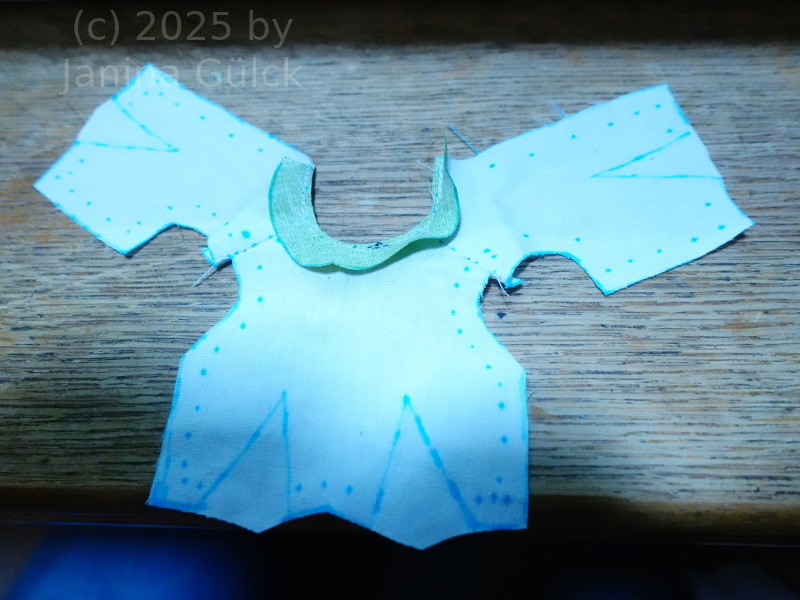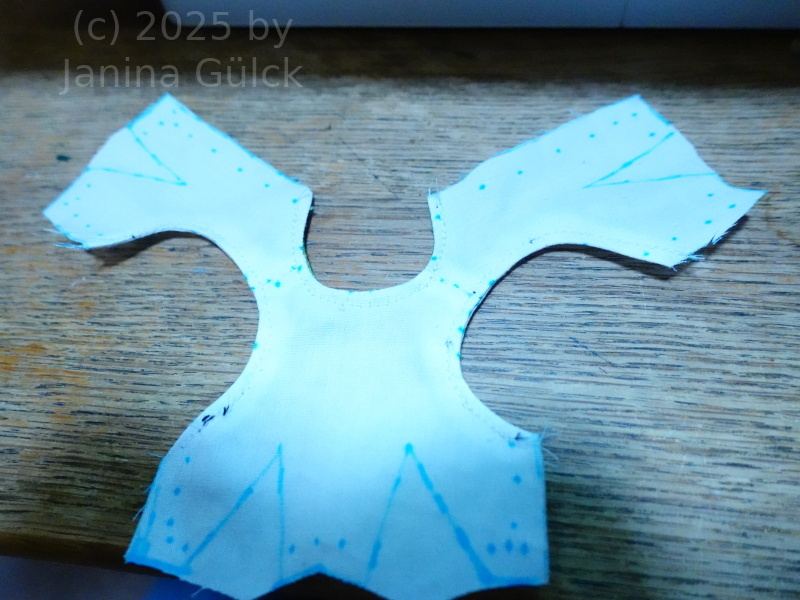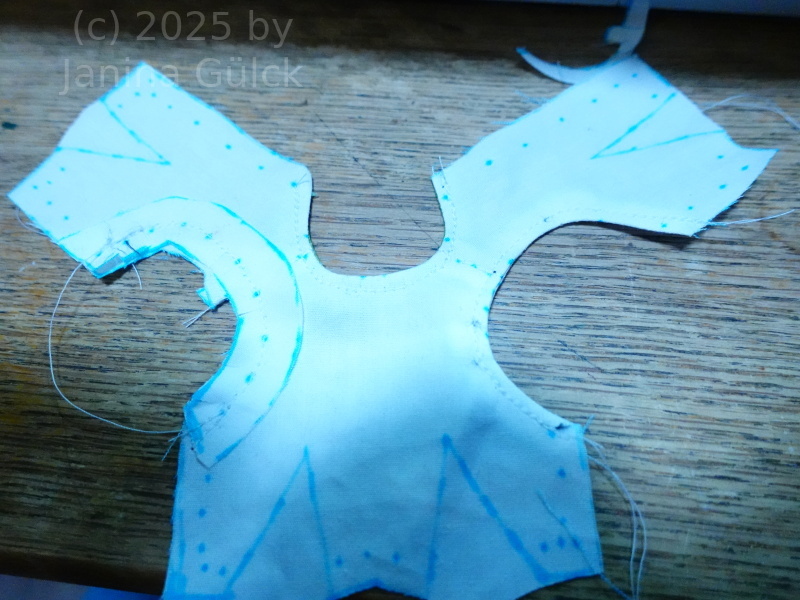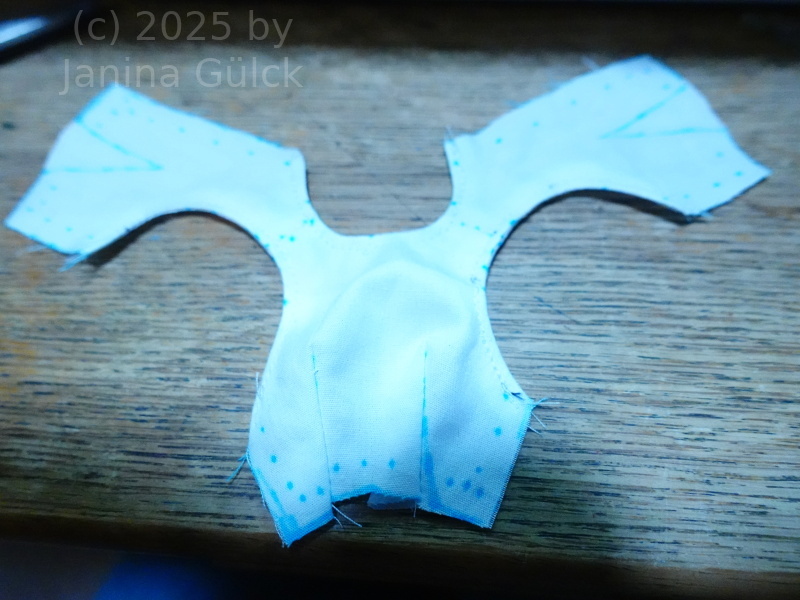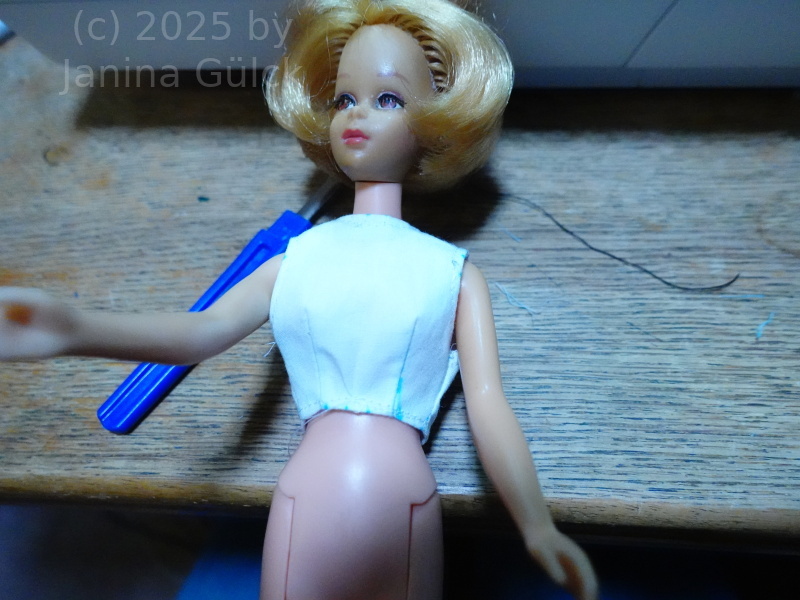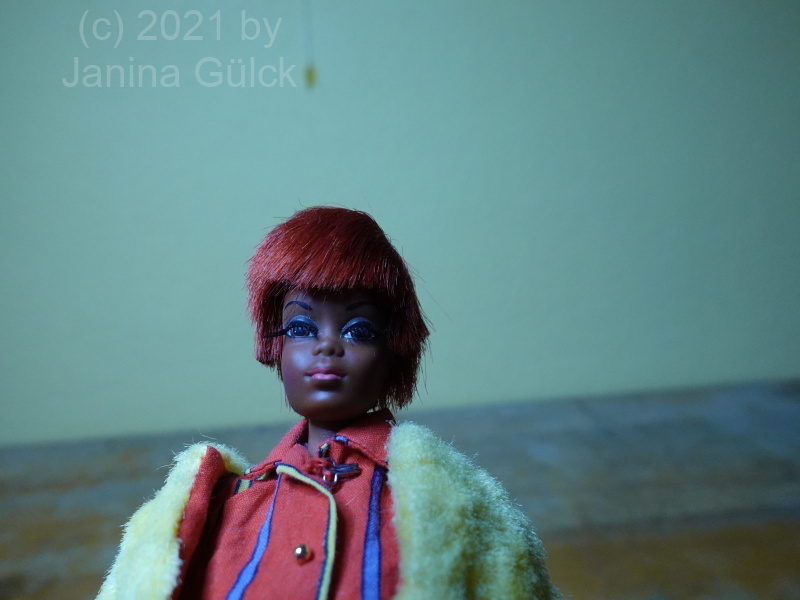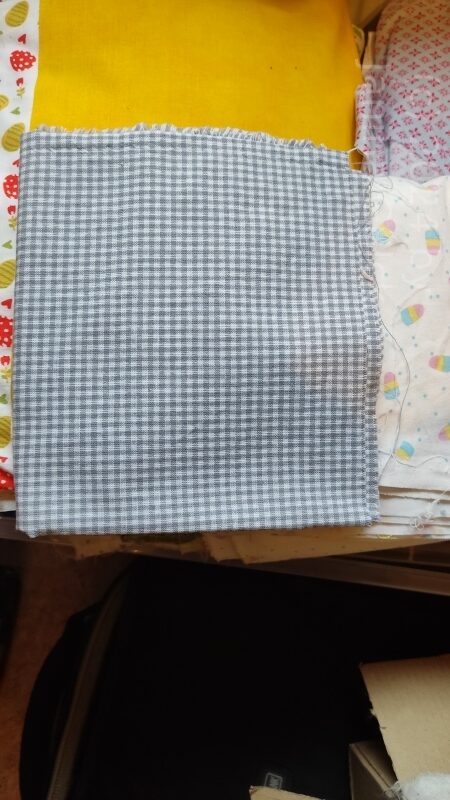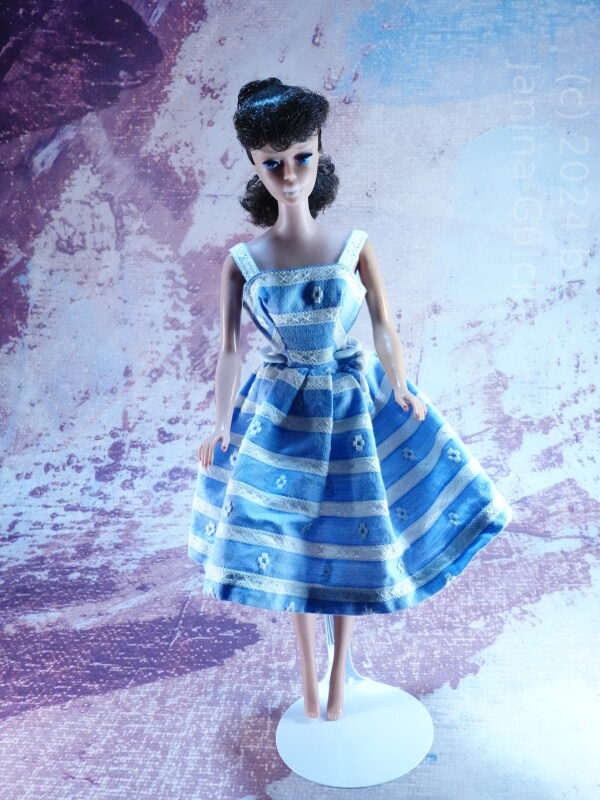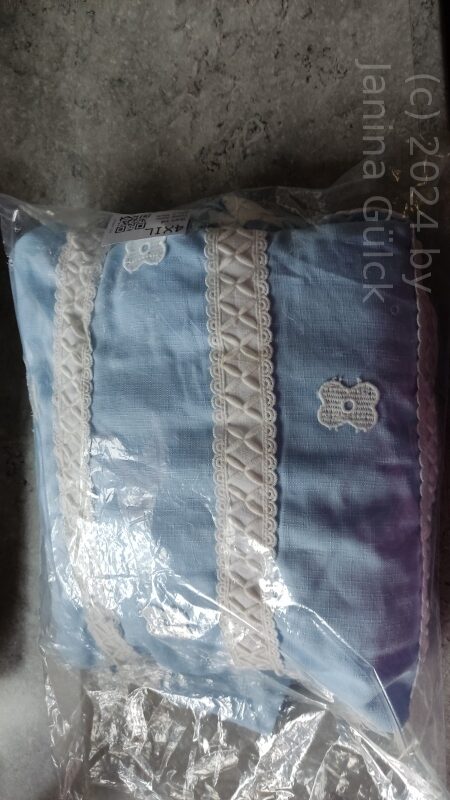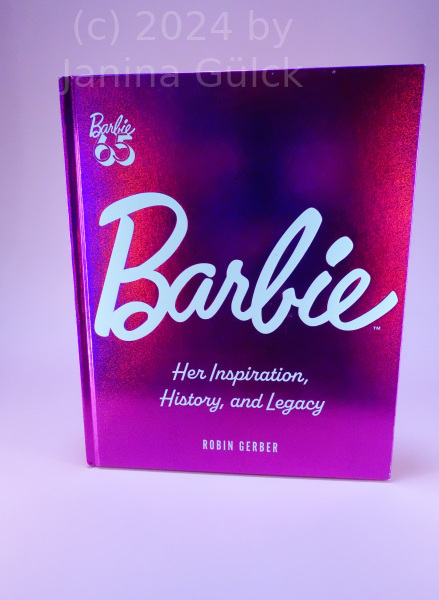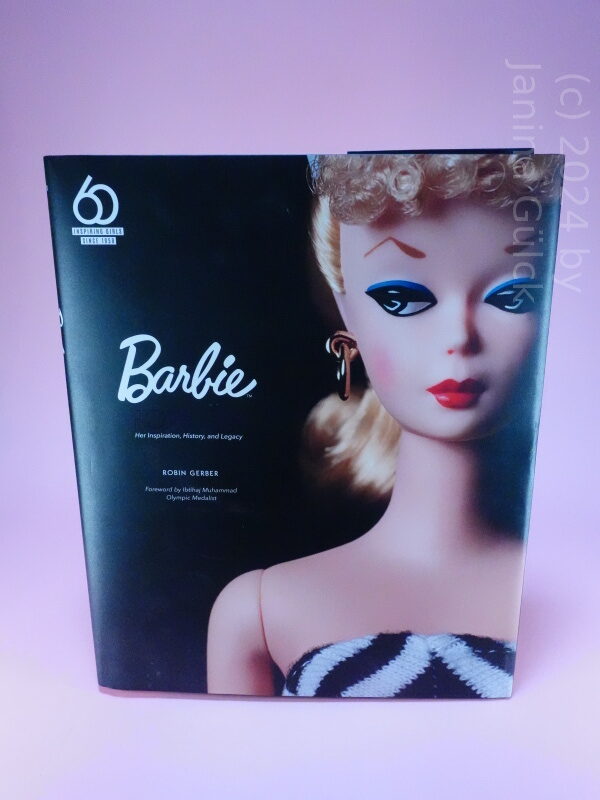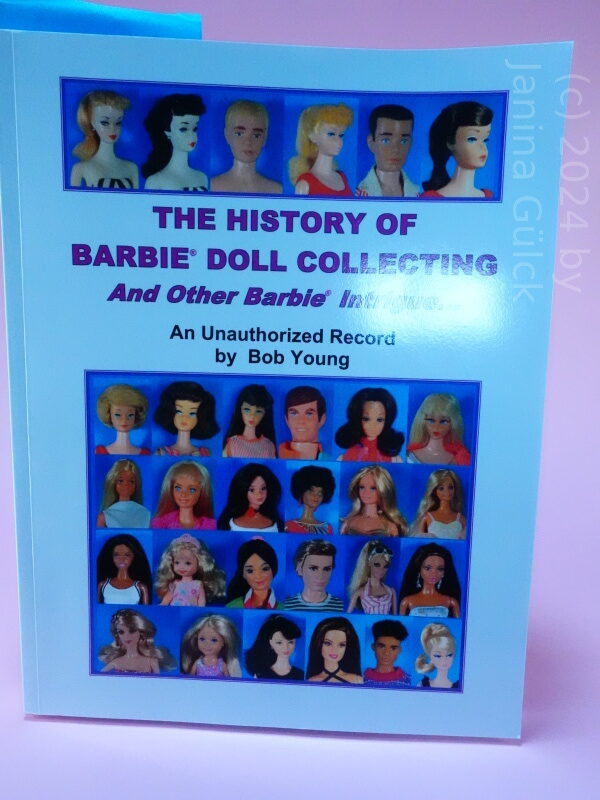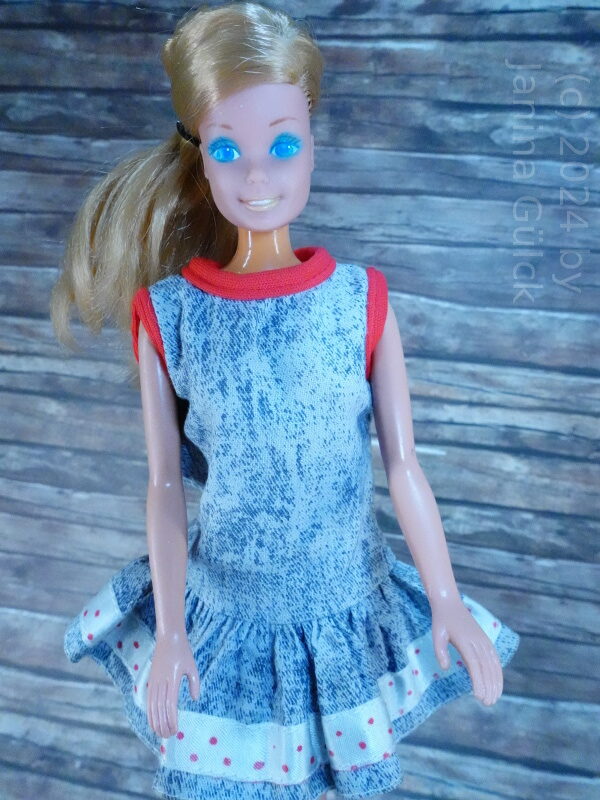Table of Contents
The Beauty Secrets Barbie/(Secretos de Belleza Barbie), released in the United States in 1979, has long been recognized as one of Mattel’s defining fashion dolls of the late 1970s. Known for her elongated legs, distinctive facial paint, and a three-piece fashion set consisting of a body suit, blouse, and skirt, she quickly became an icon of her era. Less well known, however, are the internationally licensed versions produced shortly afterward—particularly the Spanish Secretos de Belleza Barbie, released around 1980.
These Spanish editions came with outfits that appear at first glance very similar to the American original, yet upon closer inspection reveal notable material differences and, more importantly, extremely rare design variations. For collectors specializing in regional releases or undocumented outfit variants, these pieces present a fascinating and relatively unexplored niche within Barbie history.
The Original U.S. Beauty Secrets Barbie Outfit
The American version consists of three coordinated pieces:
- a pink body suit
- a sheer blouse
- a matching skirt
The fabrics used were typical of late-1970s Mattel fashion construction. While visually appealing, the materials—especially the blouse—are known to age poorly. Many surviving U.S. blouses show tearing, splitting, or brittleness due to the delicate synthetic fibers used at the time. For collectors, finding examples with an intact blouse is increasingly difficult, and complete sets in excellent condition have become more valuable accordingly.
Transition to Licensed Production in Spain
As with many successful Barbie lines, Mattel licensed production to international partners. Spain produced its own version of the doll under the name Secretos de Belleza Barbie, likely released slightly later than the U.S. model—around 1980. These Spanish editions typically followed the general design direction of the American fashion but were manufactured using locally sourced materials and sometimes featured construction differences that set them apart from the original.
Two Rare Outfit Variants: Pink With Gold Lace and Pink With White Lace
In this case, two versions of the Spanish outfit have surfaced within collector circles:
- A pink version with gold lace on the bodice, sleeves and skirt
- A pink version with white lace, with metallic detailing
Both consist of the same three components—bodysuit, blouse, and skirt—mirroring the U.S. structure. However, the presence of variant lace trims indicates that at least two different production runs existed, something rarely documented in Spanish Barbie attire of this period.
The gold-lace variant, in particular, appears to be exceptionally rare. Many collectors have not seen this version at all, and it does not appear in standard reference guides or known catalog scans. Its existence suggests that certain regional or limited batches may have been produced, potentially in small quantities or for shorter distribution periods.
Fabric Quality: A Notable Improvement Over the U.S. Version
One of the most striking differences between the Spanish and U.S. versions is the material quality of the blouse. While the American blouse is notoriously fragile, the Spanish fabric is noticeably more robust. Collectors who own both versions frequently observe that the Spanish blouse shows far fewer signs of aging, cracking, or tearing, even after four decades.
This suggests that Spanish manufacturers used a different type of synthetic fiber—one better suited to long-term durability. For collectors, this increased longevity enhances the practical value of the Spanish outfits, as they are more likely to survive in displayable condition.

Construction of the Body Suit and Skirt
The Spanish bodysuit and skirt remain quite similar to the American originals in both color and cut. While slight fabric texture differences are expected due to regional sourcing, their overall appearance aligns closely with the U.S. design. This similarity can be helpful when reconstructing missing outfits, though the lace variations on the blouse are the key distinguishing features that confirm Spanish origin.
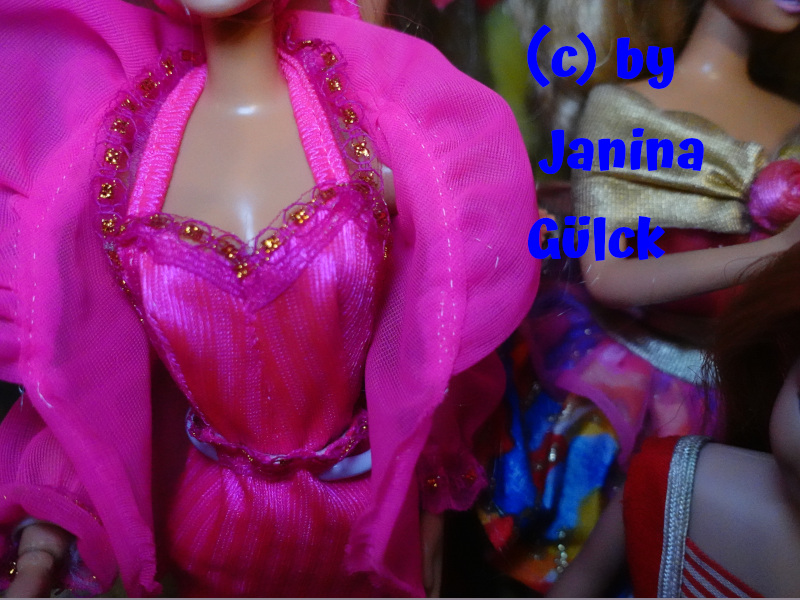
Rarity and Collector Value
From a collector’s perspective, the Spanish Secretos de Belleza outfits fall into a category that can be described as documented through collectors rather than through official records. Because many international variants were never included in Mattel’s main catalogs, their existence is often confirmed only through surviving examples and long-term observation within the community.
The gold-lace variant stands out as particularly noteworthy. Until recently, many collectors had never seen an example of this version, and its scarcity suggests extremely limited production. Outfits that appear only in isolated collections are often undervalued at first simply because they are not widely known, but their rarity can position them as significant finds over time.
For collectors specializing in:
- Spanish Barbie releases
- international variants
- undocumented outfit differences
- fashion construction changes over time
…these pieces represent meaningful additions with strong long-term interest.
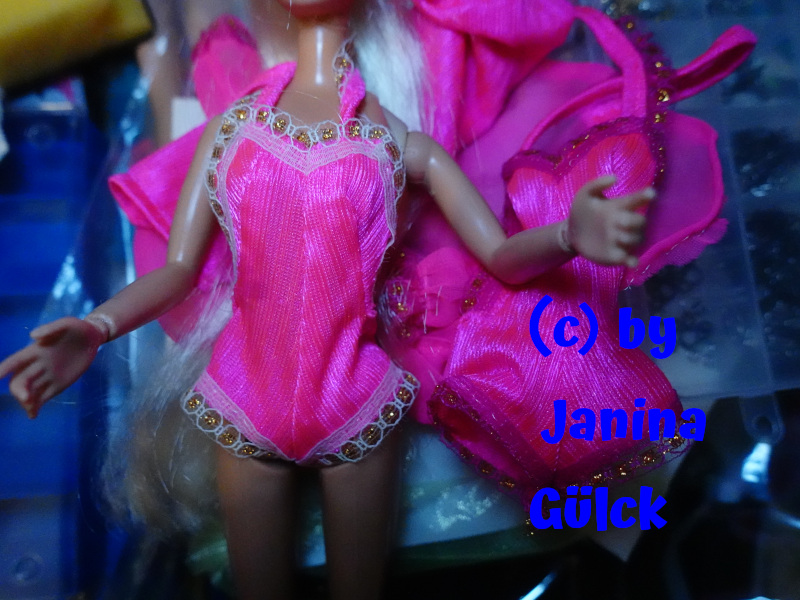
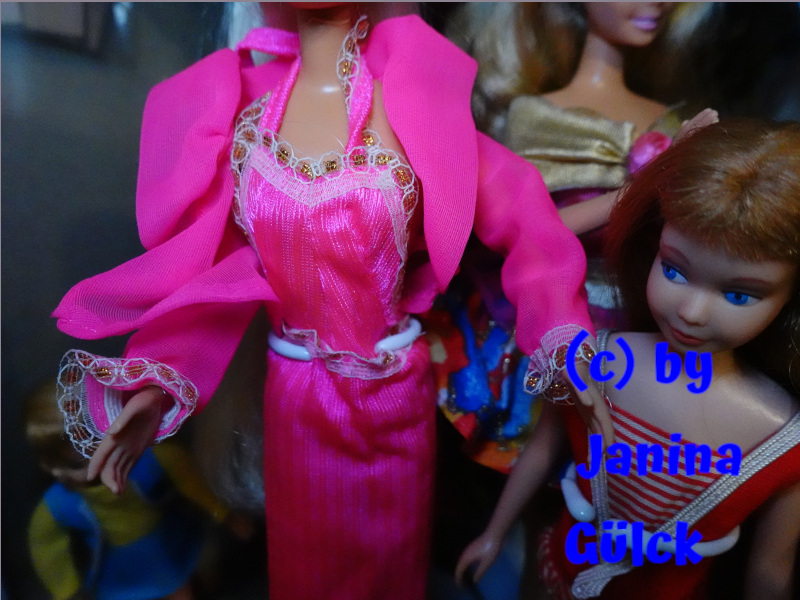
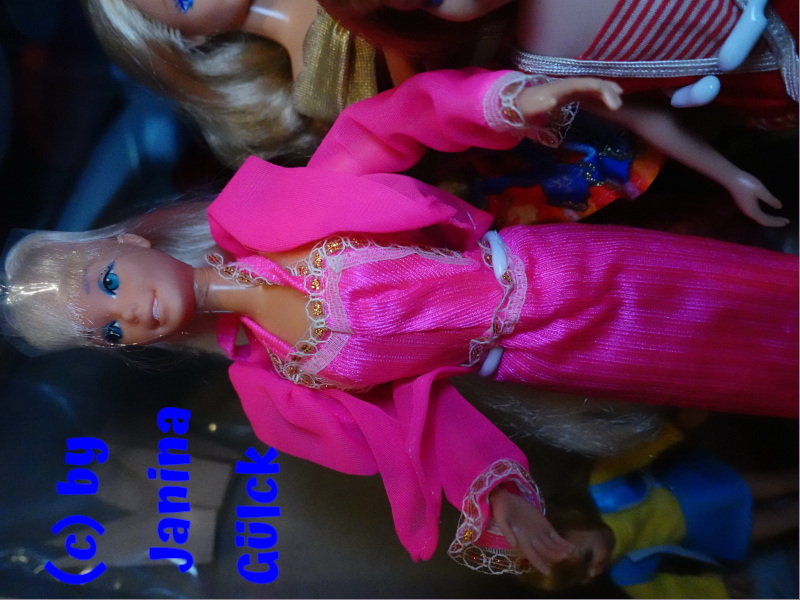
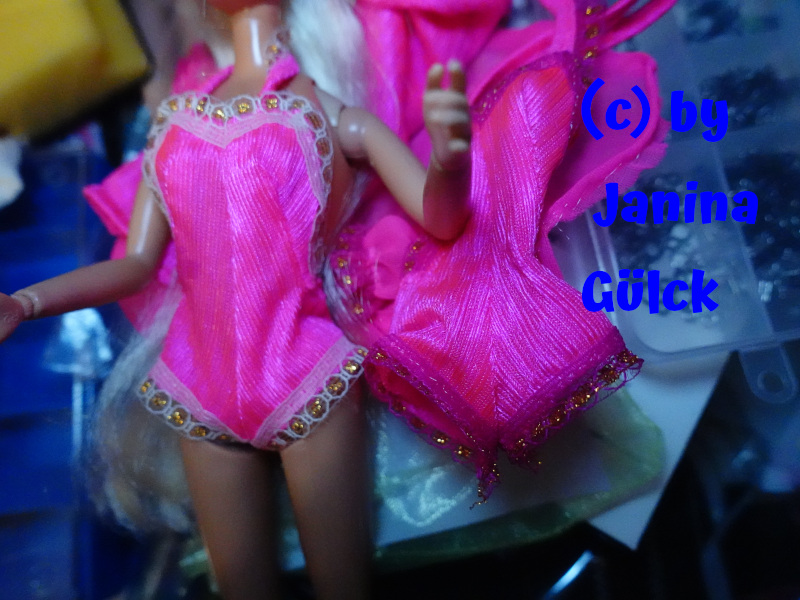
Why These Variants Matter
The existence of multiple Spanish outfit versions demonstrates how licensed production often produced subtle yet meaningful changes. These variations help us better understand the manufacturing landscape of the early 1980s and provide insight into how regional markets adapted Mattel’s designs.
For collectors, such differences offer a deeper layer of specialization. Owning both Spanish variants alongside the U.S. original creates a more complete picture of the Beauty Secrets line and highlights the global diversity of Barbie fashion during this period.
Conclusion
The Spanish Secretos de Belleza outfits may not be widely documented, but they represent an important chapter in Barbie’s international history. The improved fabric quality, the existence of at least two lace variations, and the exceptional rarity of the gold-trim version make these pieces highly appealing to experienced collectors. As more examples surface and documentation improves, these outfits will likely gain further recognition for their distinctive place within the broader Beauty Secrets lineage.

